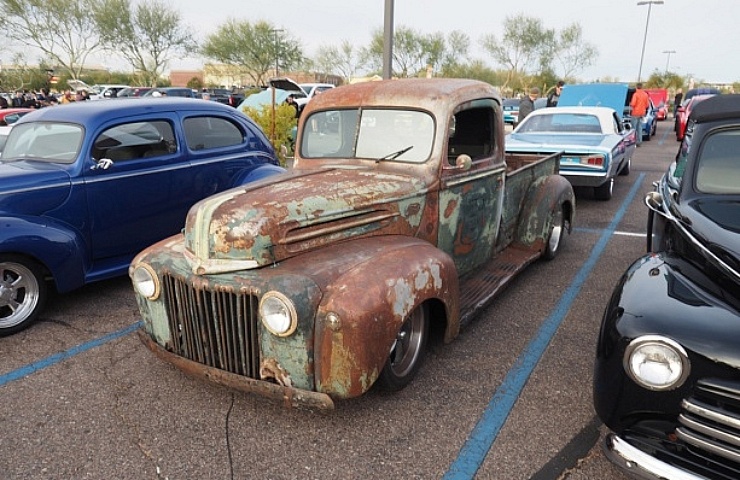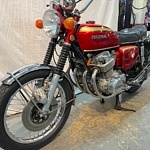Contents
Finding rust on your car is a bummer. But it’s easy to learn how to remove rust from a car and to prevent it from starting. Here’s what you need to know.
What Causes Rust on a Car?
Rust forms when iron is exposed to moisture. The steel in cars is made mostly of iron. And nearly all vehicles are exposed to rain, snow, and moisture. So, nearly all cars face the risk of forming rust.
Standing water is usually the cause. A deep scratch on the bare metal of your car’s exterior also can produce some rust. But it will probably be minimal. The real problem is usually moisture trapped behind body panels.
To make things worse, rust is permeable. That allows air and water to reach rusting iron, causing even deeper corrosion. The presence of salt and salty water can speed up the corrosion process.
Air and water are never pure. As such, environmental conditions can also produce iron hydroxides. Hydroxide rust is the flaky stuff that doesn’t stick to the iron. When the rust comes off, it exposes fresh iron to further corrosion.
Make no mistake about it: Rust is your enemy. It’s important to remain diligent about preventing rust or removing it right away.
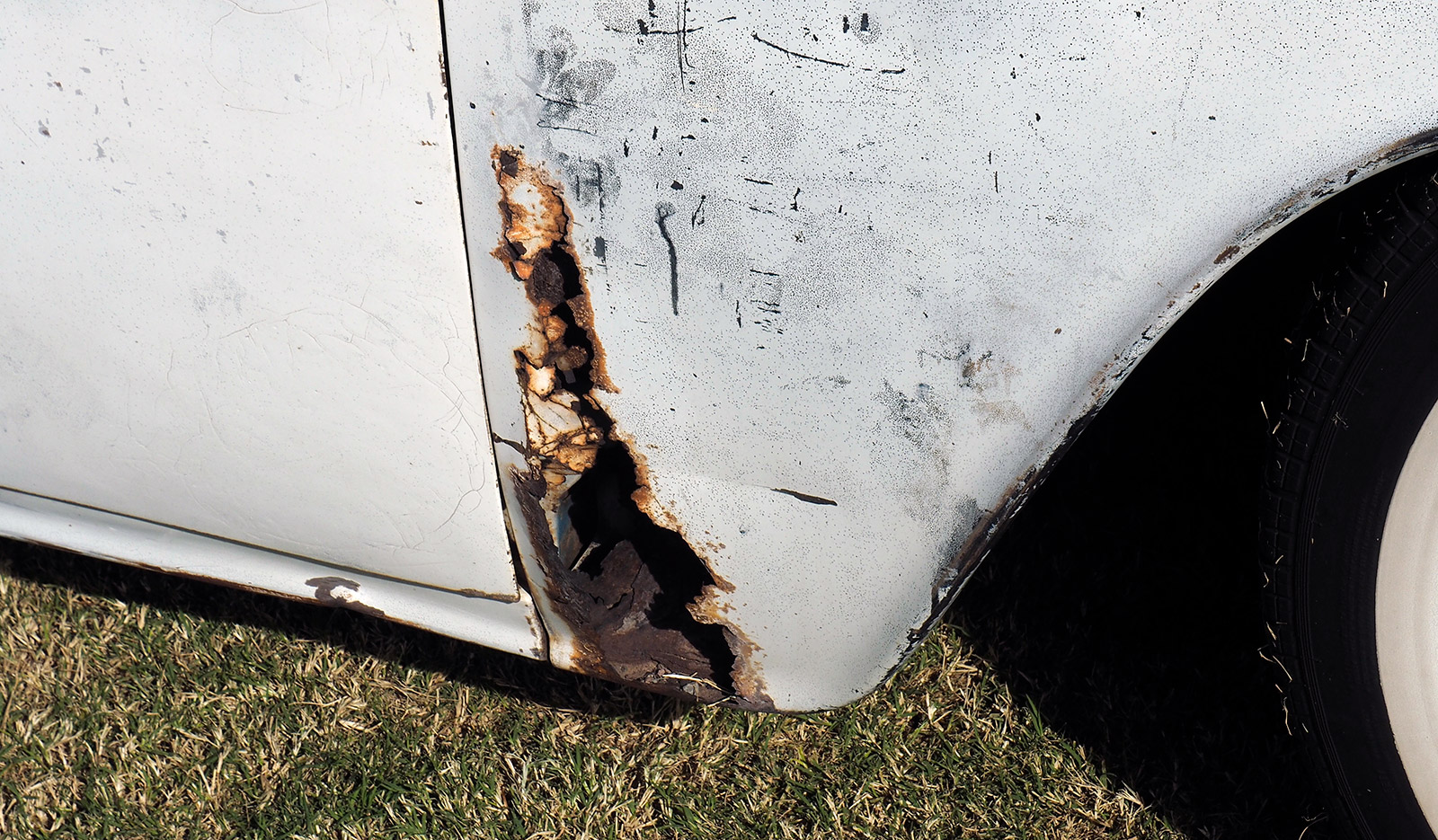
This rust was not stopped early enough. The rusty section will need to be cut out and replaced with a clean panel.
How to Prevent Rust on Cars
Keep Your Car Dry and Free from Salt
The easy and cost-effect approach to avoiding rust is to make sure that water doesn’t collect on your car’s surface. Whenever possible, dry your car with microfiber towels.
- If you drive on salted roads, rinse down the car as soon as you’re done driving.
- Pay close attention to keeping the undercarriage free from salt.
- Try using compressed air, a shop vac, or a leaf blower to blow out the water that hides behind all the creases and trim on the car.
Cars often have pathways to drain water that collects in a vehicle. These tubes and bladders can get clogged by leaves and debris. So, it’s a good idea to check the lines yearly to make sure they are free from obstructions. If you see moisture on floorboards, it’s a sign that a drain is clogged.
Some vehicles use galvanized and stainless steel to resist rust. Paints and their primers also inhibit or delay corrosion.
It’s worth thinking about a protective undercoating that you can apply to the floor pans. Most manufacturers of new cars use e-coats (electro-deposition coating). They dip metal pieces in a primer bath and use an electrical charge to help adhere the primer to the metal. This helps to deter rust.
Store Your Classic Car in a Garage for the Winter
Storing a car off-site eliminates some risk of rust. But it can be expensive and needs planning. Storage spaces are limited. The good ones get booked early.
If possible, get recommendations for reliable managed facilities from local car club members. Before storing the car, wash and wax the exterior and clean the upholstery.
Also, cars need exercise. If you have your vehicle stowed away, still take it around the block about once a week during the winter. You can go on drives when the weather if very cold, but only when the roads are dry. That will cut salt and water splashing on the chassis.
Unlike corded nylons, radial tires stay round when parked. So think about installing a set for the winter months.
If you store the car in a garage, make sure that air is circulating to avoid a damp environment.
How to Remove Rust from a Car
Find the Rust
Despite your best efforts, your car still might develop rust. Common areas include:
- The battery tray
- Lower body panels
- Rocker panels
- The frame
- The suspension
The bottom of a door panel is also susceptible. It’s where water can slip past the weather stripping and collects at the bottom of the door panel.
Check the parking area under your car and see if there are rust stains in a specific area of the concrete or asphalt. This might be a sign of where rust is forming on your car. If you see paint bubbling up anywhere on your car, that’s also a sign of rust.
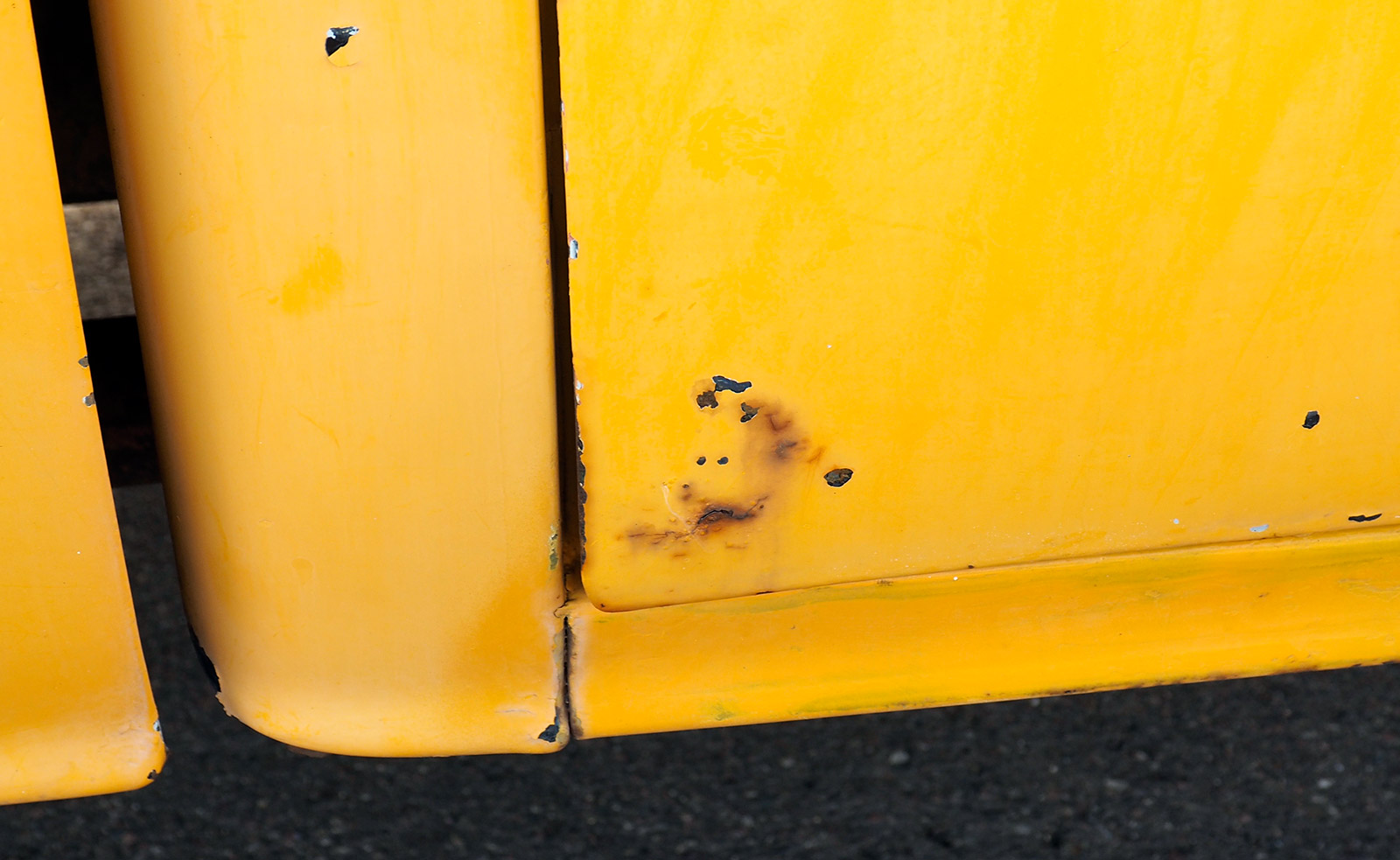
The vehicle has a little rust on the corner of the door. But the owner can easily repair the damage.
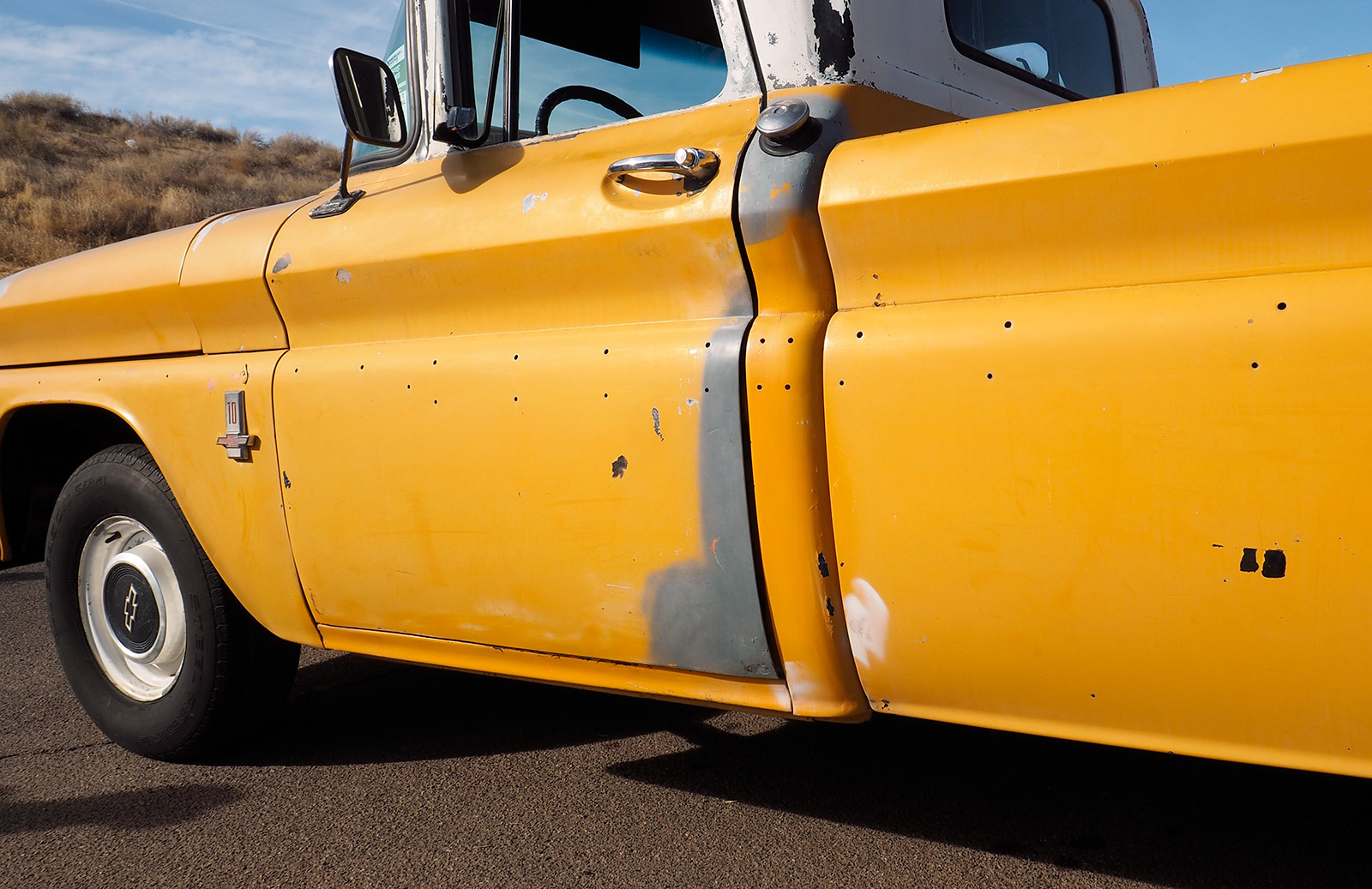
The owner fixed the rust and put primer on the metal.
Scrape the Surface
Surface rust comes off easy with a wire wheel or sandpaper. You should mask off the corrosion with painter’s tape and paper. The goal is to remove the rust but protect the good paint.
How do you know that you’ve removed all the rust, and there’s no residue? We recommend treating the area with a rust converter.
After you scrape away all the rust, there’s still work to do. It’s best to promptly paint it with primer to ward off the rust until you are ready to re-paint fully.
If you see small pinholes of rust, that could mean that the rust ate through the metal. You might be able to repair the area with body filler designed for these rusty spots. But use sparingly and only after first removing all the rust and applying a converter.
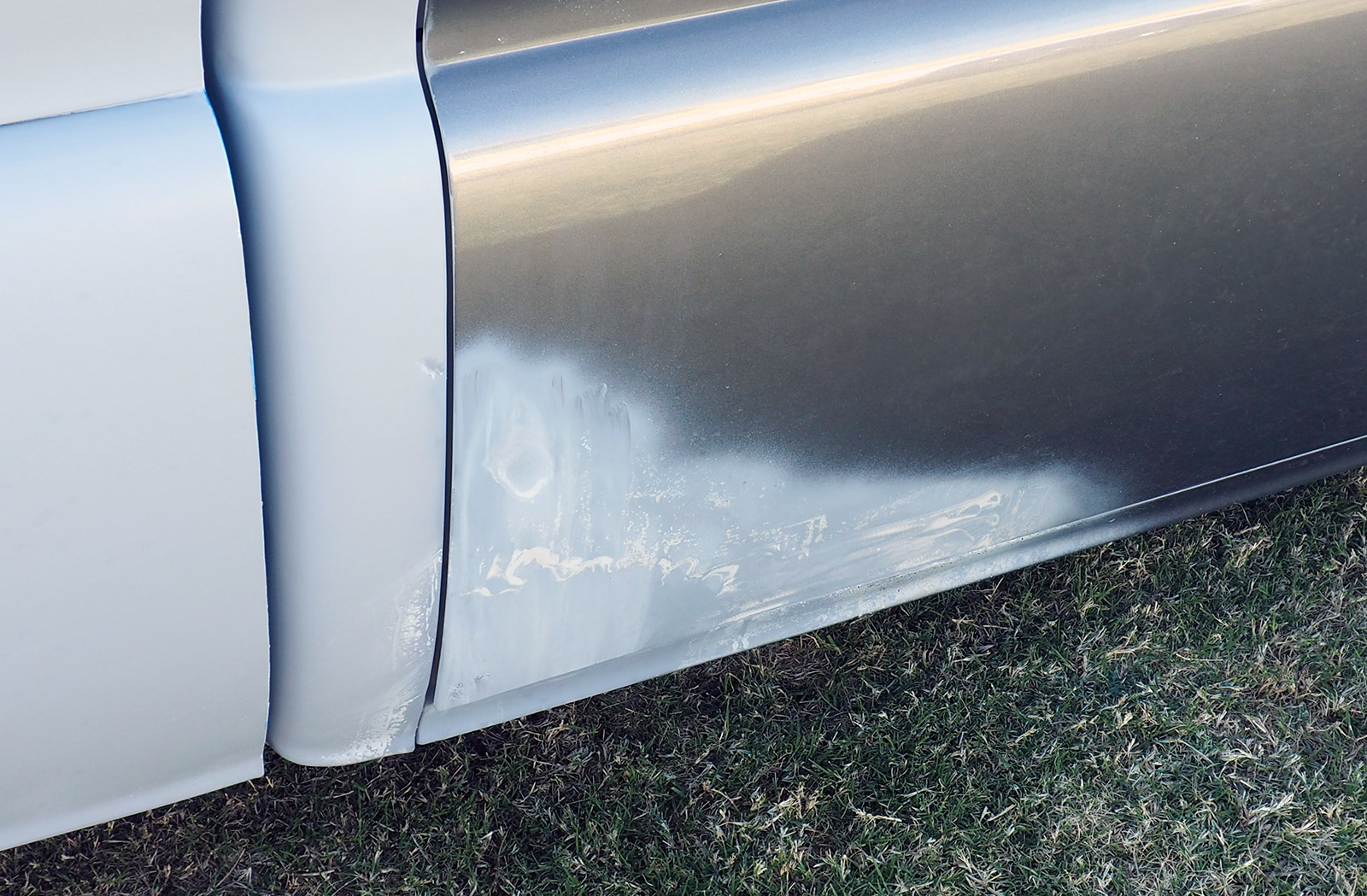
The owner of this truck caught the rust issue before it became a big job to fix.
Use a Rust Converter
As mentioned above, using a rust converter is an important part of how to remove rust from a car. The converter contains tannic acid. The acid reacts with the rust to form iron tannate, which is not corrosive.
It’s essential to be careful when applying a rust converter.
- Remember, a rust converter is an acid. Use gloves and safety glasses and protective clothing. Work in a well-ventilated area.
- Using a rust converter is a preliminary protective step. You still need to treat the metal afterward to avoid more corrosion.
- To avoid contaminating the rust converter material in its original package, pour only the required amount into a separate container.
- It’s also smart to use a disposable brush to coat the rusty area. Let it soak in for about 30 minutes. Then apply a second coat and let it dry completely.
- If the repaired spot is not visible, you can leave it as-is. But in most cases, use a primer coat of paint for extra protection.
- If it’s possible to remove a rusted part entirely, then you can coat the entire piece with a rust converter. That’s highly effective to stop rust in its tracks.
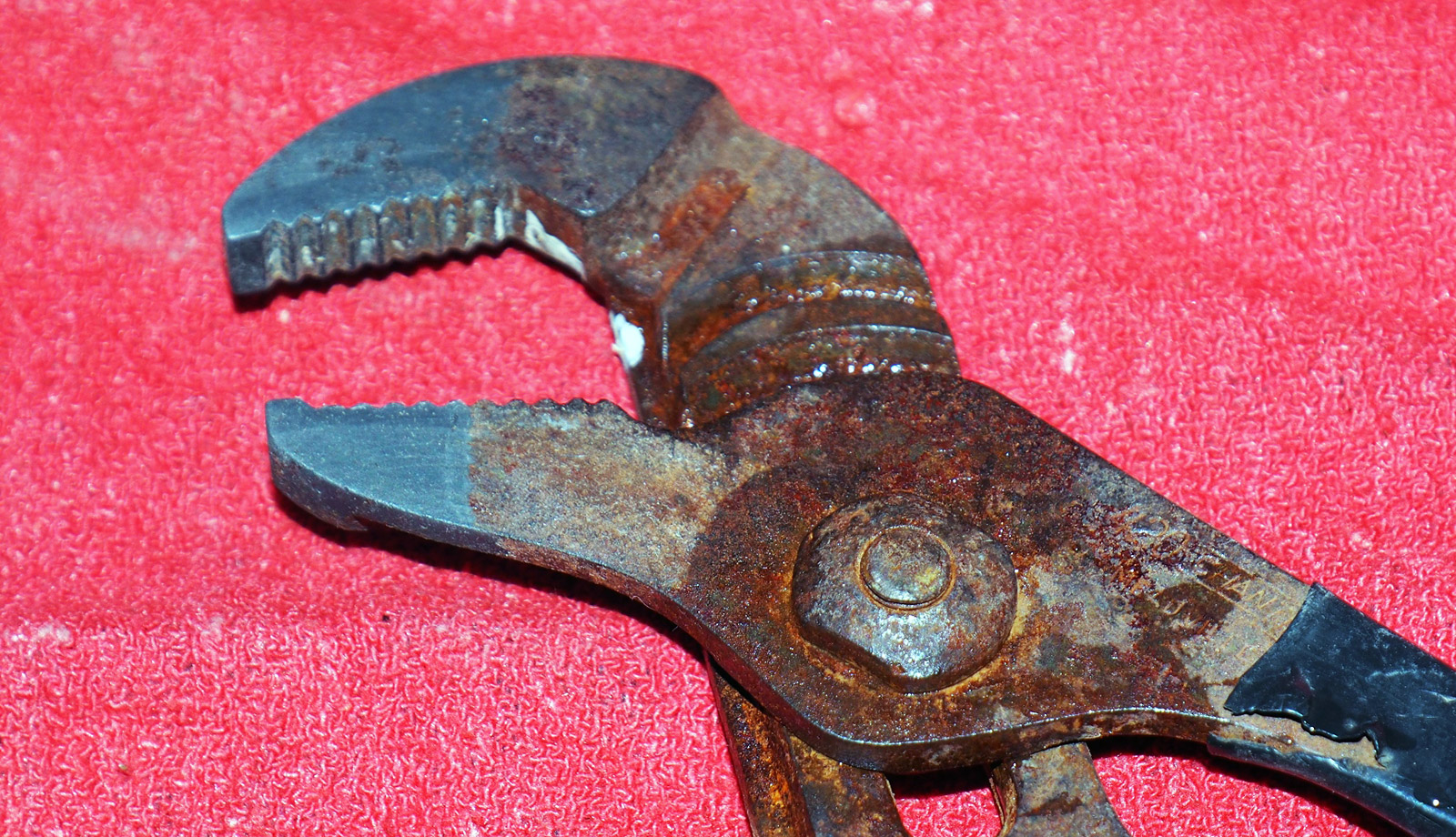
To illustrate the rust converter process, I placed just the end of the rusty pliers in some rust converter. After a few hours of soaking, notice how the tip does not show rust. Mission accomplished.
Bigger Rust Repairs
Maybe you didn’t catch the rust when it first appeared, or you bought a car that had significant rust. If that’s the case, the job is not just how to remove rust from a car. You might have to cut out the affected section and weld in a patch panel.
eBay Motors offers exterior body parts for this purpose. Typically, it’s the lower body sections that are most prone to rust.
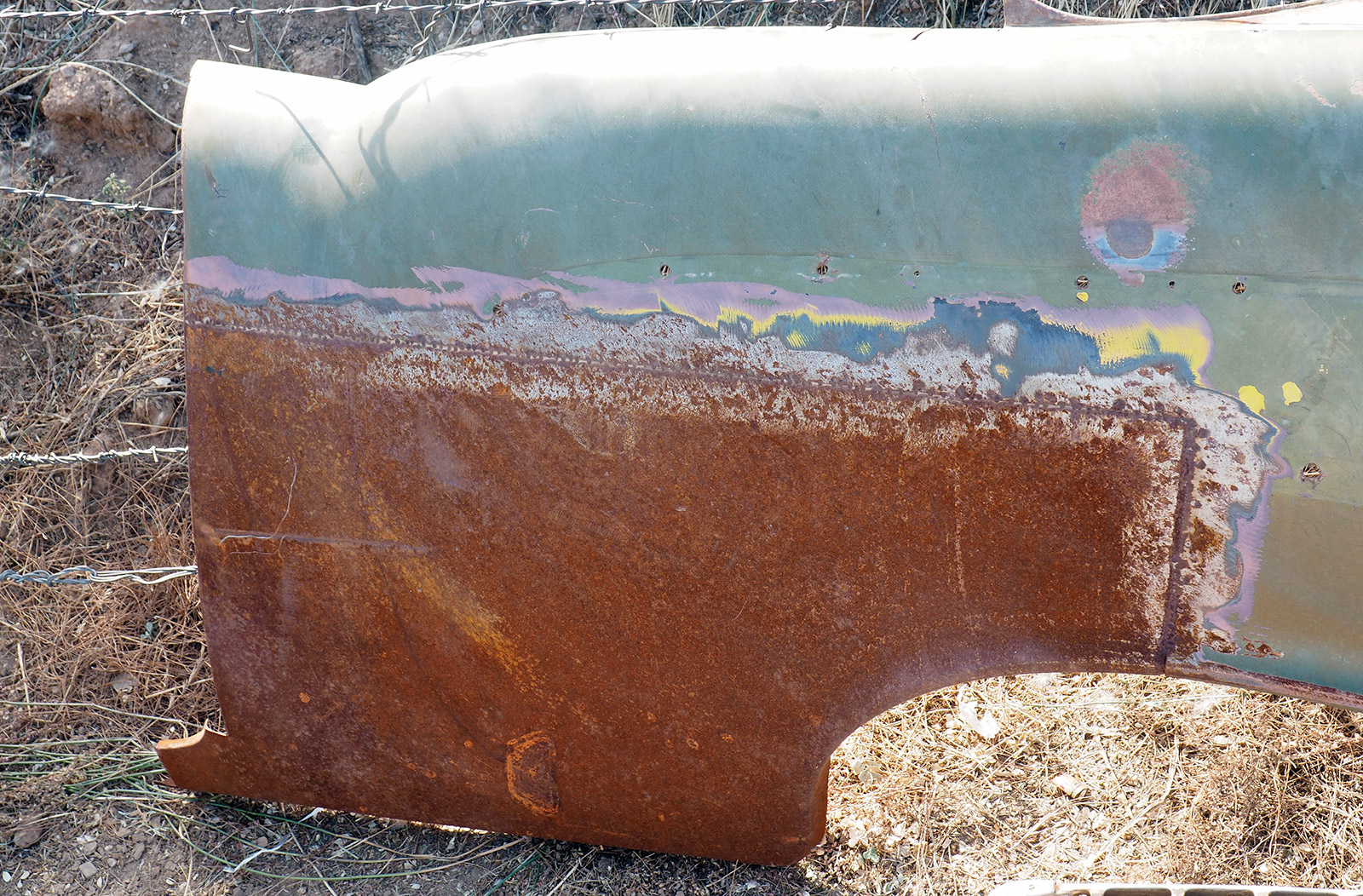
You might need to buy a replacement body part. Or a skilled craftsman can pound a raw sheet of metal into the right shape.
Here’s the process at a high level:
- Use a cutoff wheel and straight edge to cut out the bad metal.
- Cut down the patch panel to match the removed section.
- Weld the good pieces of metal together.
- Smooth down the welds before priming and painting.
Yes, this is a major task that requires skills. It’s the reason to attack rust when it first appears.
Another option is a fiberglass replacement patch panel. This alternative eliminates the need to weld in a panel. But use body filler to cover the seam and feather in the patch.
Regrettably, if the rust is too severe, it may be easier to replace the entire body piece. Given the hourly rate for skilled technicians, it probably makes sense to replace complete panels—instead of treating two or three smaller rust spots.
In the most severe cases, rust can destroy a car’s entire body. That’s a worst-case scenario. Treating rust as soon as it’s detected will help you avoid that situation.
How Much Does It Cost to Remove Rust from a Car?
If you fix a few small pinholes yourself, the cost of supplies will come out to around $50. The cost could grow to $500 or more when a body shop has to tackle a larger area of rust. But, when a repair involves replacing a whole panel, the cost for the panel (and paint) could well exceed $1,200.
You might have seen rat rods or other older vehicles with an intentional rusty finish. There is a trick to sporting a rusty patina while protecting your car from quick deterioration.
First, remove the scaly surface rust and then coat the metal with liquid waxes (or linseed oil and mineral spirits). For more details, see “The Promise and Perils of a Custom Patina.”
See Rust Remover Automotive Rust Prevention for sale on eBay.

